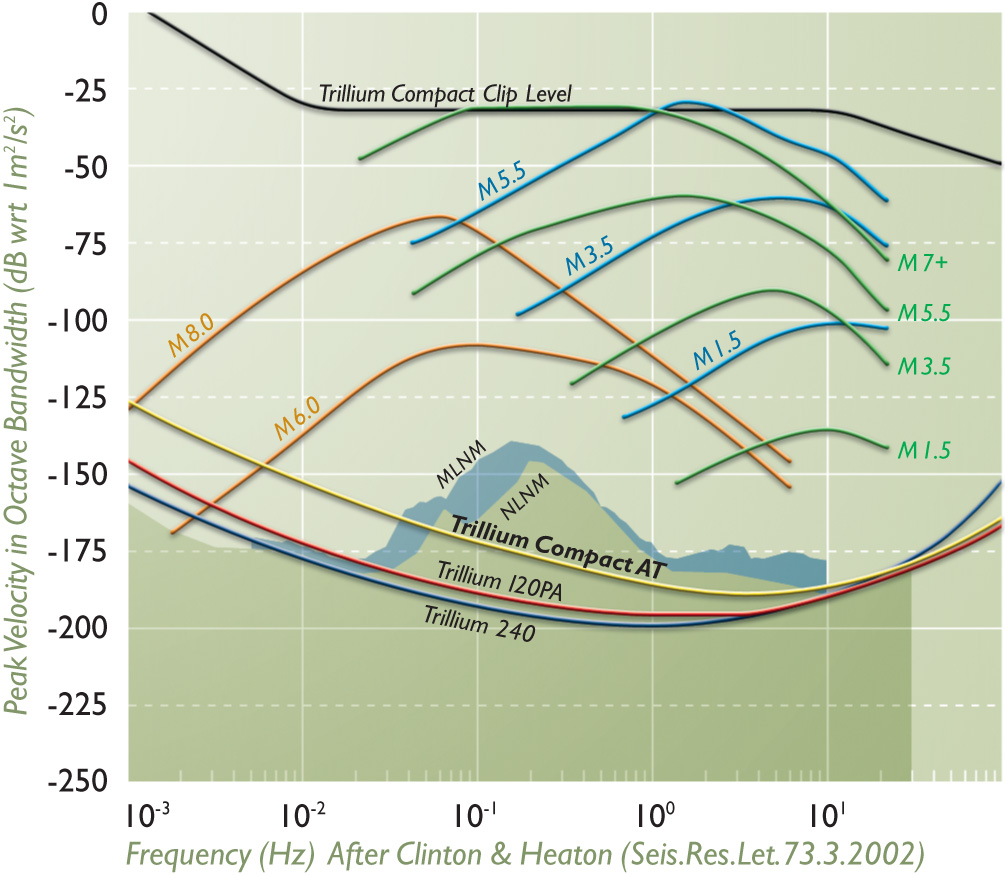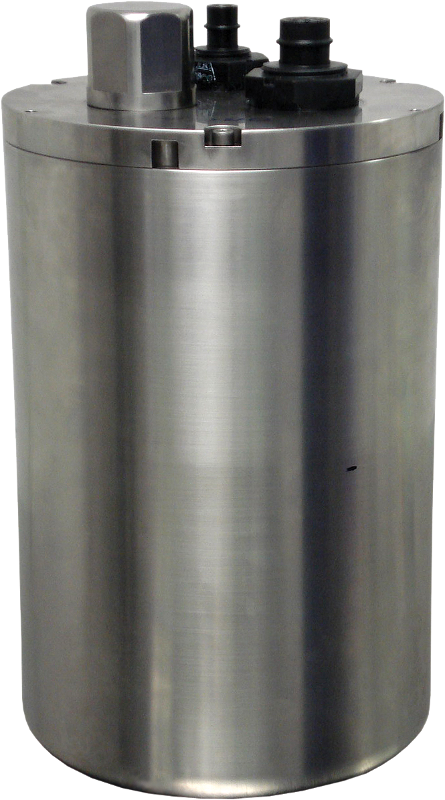Trillium Compact OBS
Summary
The Trillium Compact Ocean Bottom Seismometer is available with a titanium enclosure for deployments to 6000m in depth, or with an aluminum enclosure for shallow-water deployments to 1800m.
Its low-profile design minimizes ocean current induced noise effect and it boasts ultra-low power consumption of just 180mw.
It offers a primary analogue connection and a second, separate digital connection for final system verification prior to deploying the OBS overboard, without disturbing the primary connection.
The internal state-of-health data provides valuable information on leveling cycles, leveling corrections and case orientation, providing a powerful data set for optimizing deployment techniques.
The precise, kinematic 360°gimbal auto-levels from any orientation ensuring successful deployment and implementation. Leveling control is internal and can be scheduled or "as necessary" based on instrument tilt and mass position values.
Nanometrics' Trillium Compact OBS might be right for you if:
- You want the exceptional dynamic range and low noise floor of a land-based Trillium Compact
- You're looking for a high-performance, 120 second broadband seismometer that integrates with existing short-period or mid-band infrastructure (platforms, power systems and digitizers)
- You want ultra-low power consumption to reduce battery costs
- You'd like to minimize the effects of ocean current-induced noise
- You want the ease of automatic leveling from any orientation
Specifications
Specifications are subject to change without notice.
TECHNOLOGY |
|
|
Topology:
Feedback:
Mass Centering:
|
Symmetric triaxial
Force balance with capacitive transducer
Not required
|
PERFORMANCE |
|
|
Self-noise:
Sensitivity:
Off-axis Sensitivity:
Bandwidth:
Transfer Function:
Clip Level:
Parasitic Resonances:
Operational Tilt Range:
|
See graph
750 V·s/m nominal ±0.5% precision
±0.5 %
-3dB points at 120 s and 100 Hz
Lower corner poles within ±0.5% of nominal provided
High-frequency response within 1dB of nominal
No peak in response at high frequency
26 mm/s from 0.1 Hz to 10 Hz
None below 100 Hz
±2.5° without re-leveling
|
LEVELING AND ORIENTATION |
|
|
Technology:
Clamping:
Range:
Accuracy:
Leveling Initiation:
Magnetometer:
Case and Sensor
Inclinometers
|
Dual degree-of-freedom motorized gimbals
Jam-free mechanism
Kinematic design preserves full seismometer performance
Active, sequenced by gimbals processor
>±180° relative to upright case
Levels to within ±0.5° of true vertical
Some or all of:
> configurable delay after power on
> configurable three-stage periodic
> delay intervals configurable from seconds to months
Scheduled leveling checks do not disturb seismic data recording when sensor is level
3-component, mounted on and leveled with seismometer
Tilt orientation of vessel and sensor recorded throughout
deployment
|
DIGITAL INTERFACE |
|
|
Type:
Leveling:
Mode Selection:
Calibration Channel Selection:
Firmware:
|
RS-232 compatible Serial Line Internet Protocol (SLIP)
On board Web Server, standard HTTP
Initiate immediate leveling
Automatic cycle mode (post power-on, periodic, as-needed)
Automatic cycle parameter selection (delay with interval time selection, maximum number of attempts): XYZ/UVW
Short Period/Long period
Off, enable all, U, V, or W
Update Firmware
|
DATA OUTPUTS |
|
|
On Request:
Leveling Log:
State-of-Health Log:
|
Independent mass position values
Instrument temperature
SOH
Magnetometer readings
Case orientation (with respect to vertical)
Seismometer orientation (with respect to vertical)
Download state-of-health (SOH) log
Erase SOH log
Download custom information
Factory sensitivity and sensor response data
User calibration data (poles and zeros)
Instrument serial number and firmware revision
Every leveling event is logged in non-volatile memory
Full before-and-after state-of-health is logged
Scheduled interval logging of SOH, including:
> Time from power-on
> Seismometer mass positions
> Vessel and seismometer orientations
> Magnetometer readings
> Temperature
Capacity for more >2 years of twice daily level checks and SOH logging
|
PHYSICAL |
|
|
6000m Variant
Enclosure:
Diameter:
Height:
Weight:
1800m Variant
Enclosure:
Diameter:
Height:
Weight: |
Titanium, non-painted cylinder
All connectors on top end cap
End caps removable for O-ring servicing
Dual O-ring seals on each end cap
158 mm
257 mm, not including connectors
11.96 kg on land, 6.66 kg in water
Aluminum, anodized, enamel painted cylinder
All connectors on top end cap
End caps removable for O-ring servicing
Dual O-ring seals on end cap
170 mm
258 mm, not including connectors
8.7 kg on land, 3.01 kg in water
|
CONNECTORS |
|
|
Main Connector:
Secondary Connector:
(Auxiliary/Diagnostic):
Vacuum/Pressure Port:
|
12-pin female, VSK-12-BCL rubber-molded glass epoxy
40V peak-to-peak differential seismic signal plus ground (3 channels)
Serial RS-232 port (Rx, Tx, GND)
Calibration voltage input
Power input and return
4-pin female, VSG-4-BCL rubber-molded glass epoxy
Serial RS-232 port
Auxiliary control input
¼” male quick disconnect with shutoff
Vent for evacuation and servicing |
POWER |
|
|
Supply Voltage:
Power Consumption:
Protection:
|
9 to 29 VDC isolated
<180 mW typical (leveled, quiescent)
Reverse-voltage and over-voltage protected
Self-resetting over-current protection
Unit can be powered on for descent and ascent
|
ENVIRONMENTAL |
|
|
Operating Temperature:
Storage Temperature
Shock:
Transportation:
Magnetic:
|
-20ºC to +60ºC
-40ºC to +70ºC
100g half sine, 5 ms without damage, 6 axes
No seismometer mass lock required prior to deployment and through full experiment cycle
Insensitive to natural variations of the Earth’s magnetic field
|
Performance





